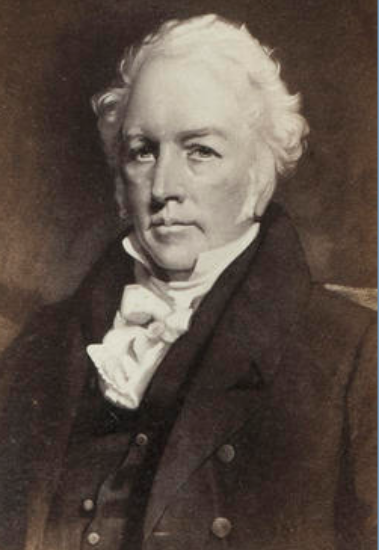James Jeffray on:
[Wikipedia]
[Google]
[Amazon]
 James Jeffray (1759–1848) was Professor of Anatomy and Botany at Glasgow University from 1790 until 1848. This 58 years of professorship is one of the longest in Scottish history.
In around 1830 he is credited with invention of the surgical chainsaw, used to remove damaged sections of bone in an accurate manner.
James Jeffray (1759–1848) was Professor of Anatomy and Botany at Glasgow University from 1790 until 1848. This 58 years of professorship is one of the longest in Scottish history.
In around 1830 he is credited with invention of the surgical chainsaw, used to remove damaged sections of bone in an accurate manner.
 James Jeffray (1759–1848) was Professor of Anatomy and Botany at Glasgow University from 1790 until 1848. This 58 years of professorship is one of the longest in Scottish history.
In around 1830 he is credited with invention of the surgical chainsaw, used to remove damaged sections of bone in an accurate manner.
James Jeffray (1759–1848) was Professor of Anatomy and Botany at Glasgow University from 1790 until 1848. This 58 years of professorship is one of the longest in Scottish history.
In around 1830 he is credited with invention of the surgical chainsaw, used to remove damaged sections of bone in an accurate manner.
Life
He was born inKilsyth
Kilsyth (; Scottish Gaelic ''Cill Saidhe'') is a town and civil parish in North Lanarkshire, roughly halfway between Glasgow and Stirling in Scotland. The estimated population is 9,860. The town is famous for the Battle of Kilsyth and the relig ...
in 1759. He studied Sciences at Glasgow University graduating MA in 1778. He then went to Edinburgh University to study Medicine graduating MD in 1786.
From 1790 he held the twin chairs of Anatomy and Botany at Glasgow University. In 1800 he was elected Vice Rector under Rector Ilay Campbell, Lord Succoth. At this time only the bodies of those executed for murder (and only for murder) could be dissected under the provisions of the Murder Act 1751. This gave a very limited supply of bodies. This sort of experiment had been enacted a handful of times in England but was the first example in Scotland. Clydesdale was the first person hanged in Glasgow for ten years.
In 1813 a mob smashed the windows of his house at College Court, wrongly believing him connected to the theft of the body of Janet McAlister from the Ramshorn Cemetery in central Glasgow.
In 1817 he was joint founder of the Glasgow Botanic Gardens.
On 4 November 1818 (assisted by Dr Andrew Ure) he dissected the body of executed murderer Matthew Clydesdale. Clydesdale was hanged for the murder of Andrew (or Alexander) Love with a pick-axe. But his fate was somewhat more bizarre. His body was subjected to galvanism (passing of an electric current) in the anatomy rooms, in an experiment to study the impact on the human nervous system. The body was connected to a voltaic pile and the hand and fingers moved. The whole gruesome event took place in the Anatomy Theatre at Old College.
In 1821 he was ordered to close a shop selling cheese and ham in the College Court which he had opened without permission.
Not until the Anatomy Act 1832 did the supply of bodies change; from the legal bodies of hanged criminals and illegal bodies supplied by graverobbers
Grave robbery, tomb robbing, or tomb raiding is the act of uncovering a grave, tomb or crypt to steal commodities. It is usually perpetrated to take and profit from valuable artefacts or personal property. A related act is body snatching, a term ...
; to bodies supplied by the parish - usually paupers.
He died at his university accommodation in 1848. He is buried on the northern slope of the Glasgow Necropolis.
Family
Around 1810 he married Margaret Lockhart (1774-1863). Their eldest son, also James Jeffray (1811-1886) was also a doctor. Their son John Jeffray (1813-1900) was a lawyer (referred to as a "writer").Artistic Recognition
His portrait byJohn Graham Gilbert
John Graham-Gilbert (1794 – 4 June 1866) was a Scottish portrait painter and art collector.
Life
Graham-Gilbert was born in Glasgow as John Graham, the son of David Graham a West India merchant and co-owner of Graham, Milne & Co who owned a c ...
is held by the Mitchell Library.
He was also portrayed by Colvin Smith
Colvin Smith RSA (1795 – 21 July 1875) was a Scottish portraitist.
Life
Smith was born at Brechin, in Angus, the son of John Smith, a merchant, and his wife, Cecilia Gillies.
He studied art in London at the Royal Academy Schools and worked ...
.
References
{{DEFAULTSORT:Jeffray, James 1759 births 1848 deaths Alumni of the University of Edinburgh Academics of the University of Glasgow Scottish anatomists Burials at the Glasgow Necropolis